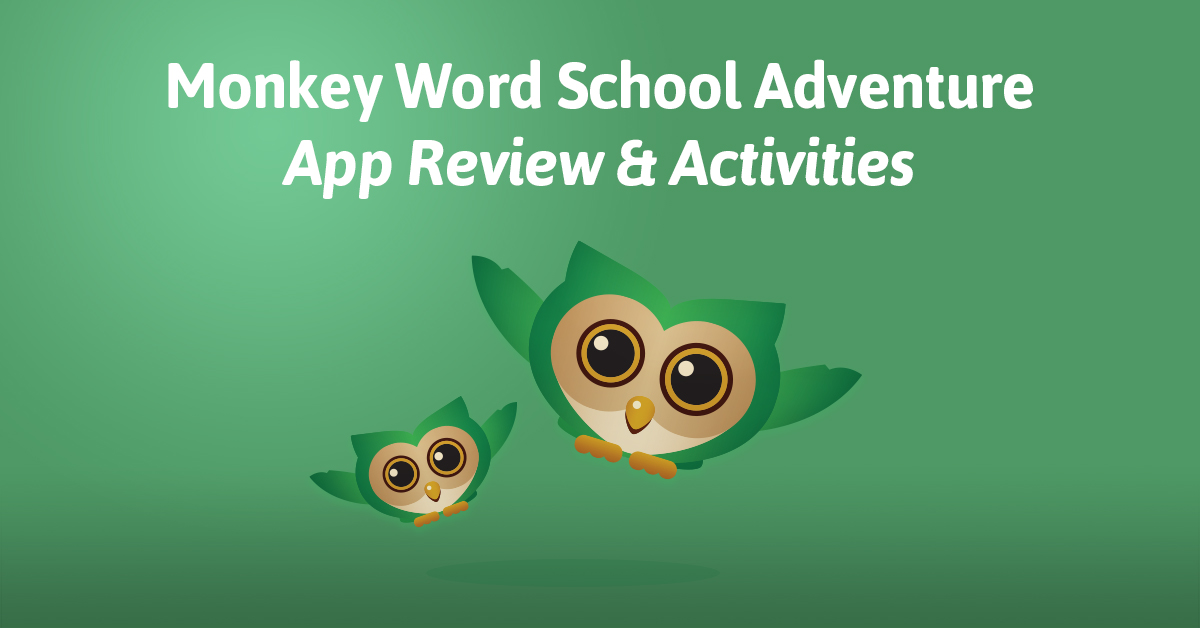Monkey Word School Adventure uses mmini-gamesto help lay the foundation for a successful reading experience. Each game adjusts to your child’s ability level. Many of the games also allow kids to self-correct to solve the given problems. Beyond the educational design, the games are really fun which means kids come back to the app again and again.

With Monkey Word School Adventure you are able to customize the play for up to three children. The language learning ranges from letter recognition and writing to spelling and phonics introducing word components such as consonant blends, digraphs, and irregular vowels. Kids even get to collect flora and fauna to play with in their custom terrarium.

We also love the amount of control parents are given to make sure their kids are successful! Use the “Knack” mode to allow the app to auto adjust, based on your child’s answers. The level your child is currently on is noted in the settings page. Not only are you able to easily find your child’s level, but they provide information about what is happenning in the level your child is on.

Activity 1: Hide and Seek
What You’ll Need:
• Index cards
• A black marker
1. Begin with four cards. Write one letter on each card. For young children start with familiar consonants, like the ones in their name. Review the letters and the sounds each letter make together with your child.
2. Have her close her eyes as you hide the cards around the room. Try hiding behind pillows or under a lamp with a small corner visible. Have her open her eyes. You might say something like this, “Somewhere in this room is a letter that makes the sound fffffffffffff (/f/). Look and you will find it. If you are having trouble I will give you hints.”
3. You might provide HOT and COLD clues or if the house is being destroyed remind them that drawers and closets do not need to be emptied. Depending on your child, you can move from easy letters like “t” to the more difficult like “q” /kw/ and “x” /ks/. You can also check to see if your child knows both sounds for “c” (/s/ & /k/) and “g” (/g/ & /j/).
Activity 2: Rhyming Riddles

You might begin the fun by saying something like this, “I am thinking of something you wear on you hands in the winter. It rhymes with kitten. What can it be?” or “I am thinking about something you find in a family room. It rhymes with hair. What can it be?”
A few rounds of this game takes no time at all. But, here is what happens in those few minutes. Your child begins looking for something in the room that rhymes with hair. She starts with a table. Table-hair-table-hair. Rhymeless. How about sofa and so on.
It is important for children to rhyme so they can detect relationship between cat, sat, hat (word families). They will be able to read words they have never seen before with this method and sometimes without a moments thought. Rhyming builds a sensitivity to sounds. It takes a sharp ear to tell that tap and lap rhyme while tap and lab to not. This will give them a distinct advantage when reading.

